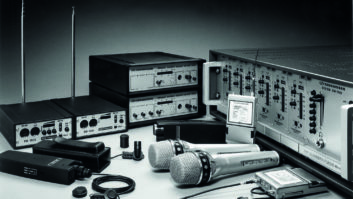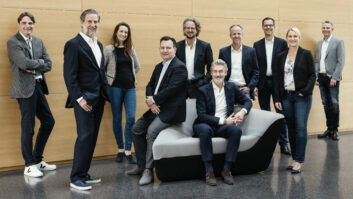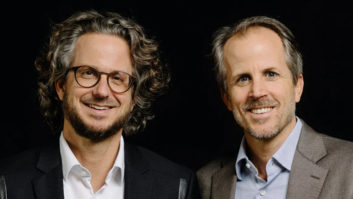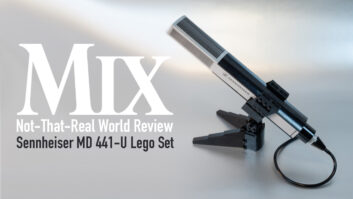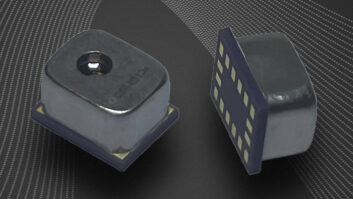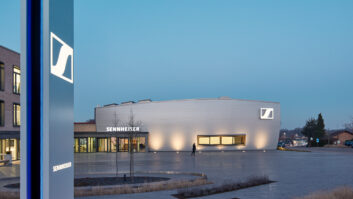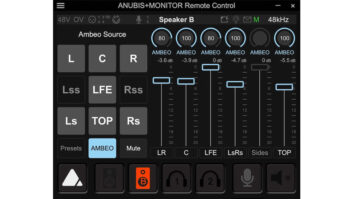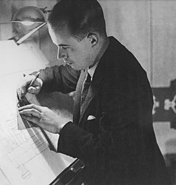
Just a few days after his 98th birthday, Dr. Fritz Sennheiser, the founder of Sennheiser Electronics passed away. His years of innovation, combined with a warm sense of caring and creating a close-knit family atmosphere at work live on in the company he started 65 years ago.
The Beginnings
In the Karlshorst district of Berlin on May 9, 1912, a child named Fritz Sennheiser was born who would forever change the course and direction of the consumer and professional audio industries. It’s ironic that at the time, neither industry existed at all, but fate would change all that. Fritz’s father wanted him to study landscape architecture, but an event a half a world away on October 25, 1929, would intercede, as the Black Friday stock market crash affect the economics of the entire planet.
Dr. Fritz Sennheiser in 1935
With that, the 17-year-old Fritz Sennheiser saw little future in landscaping during those perilous times and instead entered the electrical engineering/telecommunications program at Berlin’s Technical University and focused his studies on speech and music. The career change wasn’t entirely unexpected. Sennheiser already had a keen interest in technology—“I built my own radio receiver in 1924 from a slide coil and a crystal,” he once recalled. After attaining his Ph.D., World War II broke out and Dr. Sennheiser continued his research and headed the Institute for Radio Frequency Engineering and Electroacoustics in Hannover.
In 1945, post-war Germany was in shambles, and Sennheiser and seven other employees of the Institute were left with virtually nothing. In June of that year, Sennheiser founded his “Laboratorium Wennebostel” with a staff of just seven employees in an abandoned laboratory of Hannover’s Technical University. German scientists were then prohibited from doing research in radio technology, so Sennheiser used his savings to create a business making millivoltmeters for Siemens.
“Then we had a stroke of luck,” Sennheiser recalled. “Siemens asked if we could make microphones for them.” After building mics for Siemens, the team began designing its own mic and in 1947 debuted the MD 2, a dynamic mic that found favor with radio stations. The company grew and expanded into other products, such as amps, intercoms, transformers, headphone capsules and the 1953 MD 21 mic, which is still in production. Based on a lab model developed in 1949, the company’s 1956 MD 82 was the first shotgun mic. A move into wireless mic production followed a year later.
By 1958, the company had 450 employees and made the wise decision to change its name from the original “Labor W” (Laboratorium Wennebostel) to Sennheiser Electronic. During the 1950s, the company’s sales grew tenfold, but Sennheiser always returned to the community, splitting his time between running the company and teaching at Hannover Technical University—a tradition continued by his son (and current chairman of the company’s supervisory board), Prof. Dr. Jörg Sennheiser.
Innovations Abound
The innovations continued, with the 1960 MD-421 dynamic studio mic (which sold more than 500,000 units and is still a studio favorite today) and in 1964, the first RF condenser shotgun mic. In 1968 came the HD 414—the first open-air headphones, a definite hit that in 10 years provided more than half of the company’s sales, establishing Sennheiser as a leader in the consumer market. In the ’70s, the company merged its headphones with infrared technology, creating interference-free wireless headsets for home, tour guide and assistive listening systems. The ’80s brought a major expansion into ultra-reliable UHF wireless mic systems that made Sennheiser a first choice on London and Broadway stages.

Dr. Fritz Sennheiser
The New Generation
On May 9, 1982 on Dr. Fritz Sennheiser’s
70th birthday, the management of the company was transferred from
father to son, but this did not change Sennheiser Electronic’s role as
a technology leader. The company has received numerous accolades in
this regard, including a 1987 award from the Academy of Motion Picture
Arts & Sciences for the industry-standard MKH 816 shotgun mic and a
1996 Emmy for developments in RF wireless. However, doing things
differently has also played a vital role in the company’s success. In
1984, Sennheiser was the first medium-sized company in Europe to use
modern surface-mount technology. Today, while other companies depend on
low-cost third-world manufacturing, Sennheiser has plants in Germany,
Ireland and Stateside in Albuquerque, N.M.
In 1991, Sennheiser purchased a financially troubled Neumann, a change
that provided the best of both worlds: Neumann had access to modern
electronics manufacturing, while the “old-world” processes—such as
capsule hand-assembly—would be done under clean room conditions. Other
companies might have been tempted to buy Neumann and then cash in via
cheap products with a famous name—a familiar scenario—but Sennheiser is
committed to maintaining Neumann’s reputation for excellence.
The Sennheiser/Neumann relationship continues. The two collaborated on
the KK105S wireless mic that combines Neumann’s famed KMS105 capsule
with Sennheiser’s SKM 5000 UHF wireless rig. More recently, loudspeaker
manufacturer Klein + Hummel joined the Sennheiser Group.
Sennheiser is successful, but the business integrity instilled by Dr.
Fritz Sennheiser remains a priority. Son Jörg Sennheiser once refused a
lucrative deal to produce some 200,000 weatherproof mic capsules when
he realized they were to be used as land mine triggers. But this has
always been the company way, a policy dating back to the early days of
Labor W, when Dr. Fritz Sennheiser invested his savings to create jobs
for his co-workers.
Dr. Fritz Sennheiser will long be remembered for his life-long passion
for making new discoveries. “We were always dissatisfied with the
‘state-of-the-art’ and always wanted to create something new, something
better,” he once said. “Our main priority was to have fun in developing
something. And we certainly had a lot of fun when we discovered
something really new.”
Dr. Fritz Sennheiser leaves behind a vast legacy of innovations and many friends throughout the world. He will not be forgotten.
